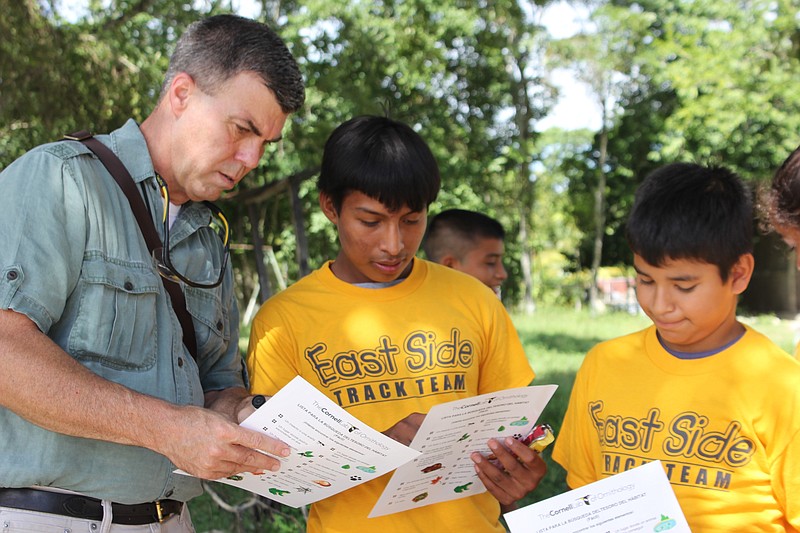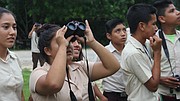This month, the Louisiana waterthrush leaves Chattanooga to journey back to its Guatemalan wintering grounds. Though the river gorge will soon be absent of its sweet sweet sweet willy willy song, the significance of the waterthrush now echoes throughout the world.
Thanks to a recently concluded Tennessee River Gorge Trust project, the small black- and white-streaked songbird has helped bridge science and culture, while becoming a symbol of our planet's interconnectedness.
Here is its story.
The Science
The Louisiana waterthrush is an important indicator species, meaning that its presence - or lack thereof - can be reflective of the health of the surrounding forest. Currently, populations are growing in the Southern U.S. but declining in the North.
The Tennessee River Gorge Trust team wanted to know more about this trend.
While they knew that local waterthrush populations travel each winter to Guatemala, they hoped to pinpoint the precise region. This information could provide insight on the population changes by revealing potential problems in that surrounding habitat - development, pollution or poor land management, for example.
So in 2016, the trust launched a multi-year study focused on capturing waterthrushes in the river gorge and fitting them with tiny, lightweight tracking devices. Known as geolocators, these devices map the birds' migration routes. However, in order to retrieve that data, field technicians would have to recapture the same birds when they returned to the the gorge the following spring - which they managed to do.
This summer, after nearly four years of research, the trust finally determined where these river gorge summer residents spend their winters: Guatemala's northern Peten region. Though the finding is just a first, albeit critical, step in understanding the complex factors contributing to the opposing population trends, the research served a second purpose: to connect two seemingly very different cultures.
The Culture
In 2017, the trust partnered with La Paz, a local nonprofit that provides social services to Latino families. Their goal was to develop an exchange program, connecting Chattanooga with the Spanish-speaking countries with which it shares the waterthrush.
In the summer of 2018, trust and La Paz staff traveled to Guatemala. There, they met with bird researchers, educators and students to share their research, using the waterthrush to establish common ground. The following spring, three Guatemalan naturalists traveled to Chattanooga - around the same time that the waterthrush was also returning to the area. The naturalists arrived just in time to help with the trust's final season of the waterthrush study.
On a warm April afternoon, Rick Huffines, executive director of the Tennessee River Gorge Trust, and the three visiting naturalists went to one of the project study sites. Setting up mist nets and decoys, they were able able to successfully recapture one of the banded birds.
At the end of the day, naturalist Noel Vicente, also from Guatemala's northern Peten region, told Huffines, "I expect to see my birds in September."
"And I expect to see mine next spring," Huffines replied.
The conservation decisions made in one area, says Huffines, affect so much more than the local ecosystem.
Though research is still needed to fully understand the birds' life cycle and all the pressures the species may face, now, at least, the trust team can rest assured that this winter the birds will be in good hands.

